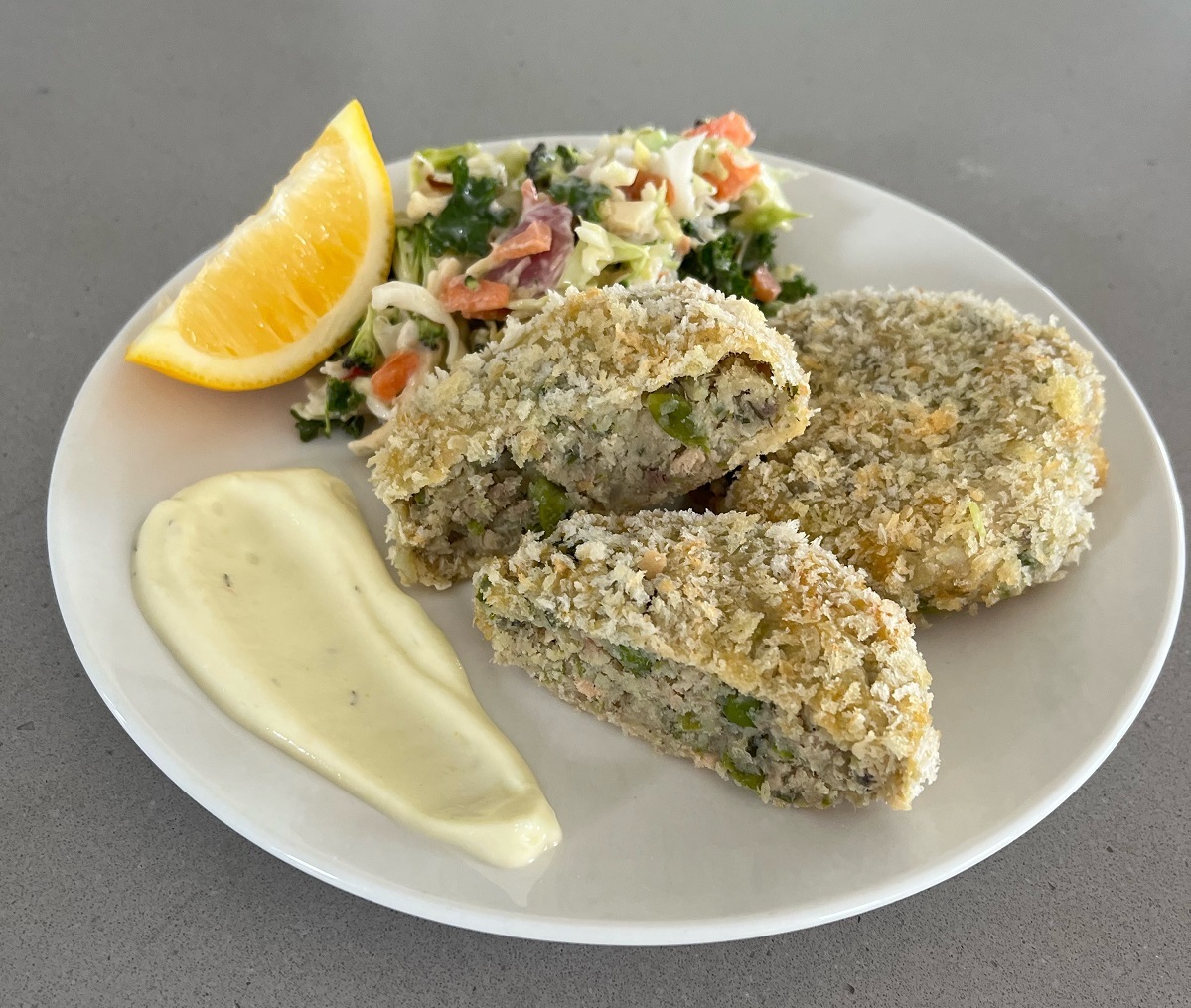Four food groups to focus on for healthy ageing

Good nutrition matters at every stage of life, but it’s particularly important as you get older. Research shows there are four food groups you should pay special attention to as the years tick by. Read about them below, then discover a delicious recipe that uses them all.
By Emily Jakubcik (Arvida Head of Food Service) and Julia Scott (Arvida Head of Nutrition)
1. Protein
To preserve muscle mass and strength, older adults need more protein than younger adults. Age-related muscle loss, known as sarcopenia, begins after the age of 30. As muscles get smaller and weaker, you become less mobile and the chance of falls and fractures is higher. [1]
Eating enough protein helps to preserve your muscle mass. It’s essential for the repair and maintenance of body tissue. Eating 25 to 30 grams of protein during a meal stimulates muscle protein synthesis, so try to ensure meals – and some snacks - include protein.
Meals
- 100g of pure red meat/chicken/fish (yields 25g protein)
- Cup of legumes (beans, lentils, chickpeas) (yields 16g protein)
- Fish is recommended at least twice a week, because it’s a protein source that includes haem iron, protein and iodine. Fatty fish (salmon, tuna, sardines) is extra-beneficial due to its high levels of omega 3
Snacks
- Sandwich with protein filling, such as egg, cheese, fish, soft meat or hummus
- Yoghurt with and/or fruit
- Cheese and crackers
- Hummus and crackers/vegetable sticks
- Mini quiche/savoury
- Smoothie made with milk/yoghurt/protein powder
2. Calcium
Calcium is important for bone health as you age, because the body breaks down bone at a faster rate. Getting enough calcium is particularly important for older women, as they are at the highest risk of osteoporosis and fractures. [2]
To feed your bones, try to eat three servings of dairy every day. Options inlcude milk/yoghurt at breakfast, cheese as a snack or as part of a main meal, smoothies made with milk and yoghurt, and milky desserts like custard and ice cream.
One serve of milk:
- 1 pottle yoghurt (150 g)
- 2 slices cheese (40 g)
- 2 scoops ice-cream (140 g)
- 1 large glass calcium-fortified soy milk (250 ml)
3. Vitamin D
Vitamin D helps your body absorb calcium from food, so it plays an important role in bone health. Sunlight is the best form of Vitamin D, which is why it’s good to spend at least 30 minutes outdoors every day. Some Vitamin D can also be obtained from oily fish, eggs and lean meat.
4. Fibre-rich carbohydrates
Fibre plays an important role in the health of older adults. It’s involved with healthy digestion, feeling full and preventing constipation. It also plays a role in reducing the risk of heart disease, diabetes, and some cancers. What’s more, it’s been shown to reduce inflammation in the body. [3]
The aim is to get 25 to 30 grams of fibre every day and the best way to do that is to eat fibre-rich carbohydrates, which also provide B vitamins and minerals. Here are some examples:
- 1/2 cup baked beans (8.2g fibre)
- Bran muffin (approx 6g fibre)
- 1 slice wholemeal bread (3.2g fibre)
- 1 cup cooked porridge (approx 5.3g fibre)
- Peas and other vegetables with their skin on
- Baking using wholemeal flour and/or bran
Salmon and Kumara Fish Cakes with greens and lemon yoghurt dip
This yummy recipe contains all four focus foods for healthy ageing – and it’s easy!
Fish cakes
- 1 medium kumara, peeled and chopped
- ¾ cup frozen peas
- 210g can salmon, drained and mashed
- 2 spring onions, finely chopped
- 1 Tbsp chopped fresh parsley (or 1 tsp dried)
- 1 Tbsp chopped fresh dill (or 1 tsp dried)
- ¼ cup plain flour
- 1 egg
- 1 cup panko breadcrumbs
Lemon yoghurt dip
- ⅔ cup Greek yoghurt
- 2 tsp Dijon mustard
- 2 tsp lemon juice
- 2 tsp chopped fresh dill (or ½ tsp dried)
Method
- Boil kumara in a pot of water on the stove for 12 minutes.
- Add the peas to the pot of kumara and continue boiling for another 3 minutes. Drain the water and mash roughly with a fork or potato masher. Set aside to cool.
- In a large bowl, place cooled kumara mixture and add the salmon, spring onions, parsley and dill. Season with pepper and stir until well combined.
- Divide the mixture into 8-10 portions and shape into patties.
- Sprinkle flour on a large plate. In a shallow bowl, whisk the egg. In a separate clean bowl, place the breadcrumbs. Press each fishcake into the flour to coat, then dip into the egg mixture and finally coat in breadcrumbs. Cover, then chill for 30 minutes to firm up.
- Preheat the oven to 180°C. Line a large baking tray with baking paper. Place fishcakes on prepared tray and spray or brush generously with olive oil. Bake for 30 minutes or until golden, turning fishcakes halfway through cooking time.

References
[1] Harvard Education
[2] Nutrition Foundation
[3] acl.govt
Top photo by Brooke Lark on Unsplash

